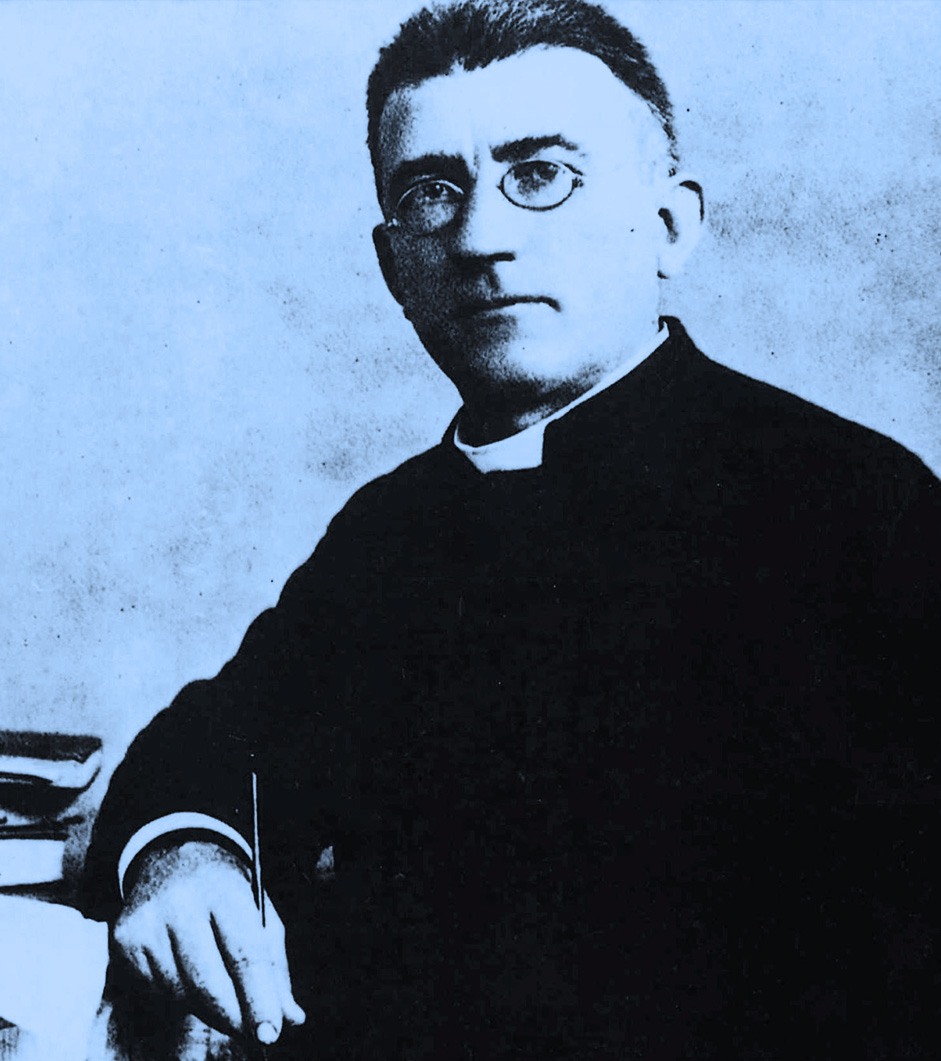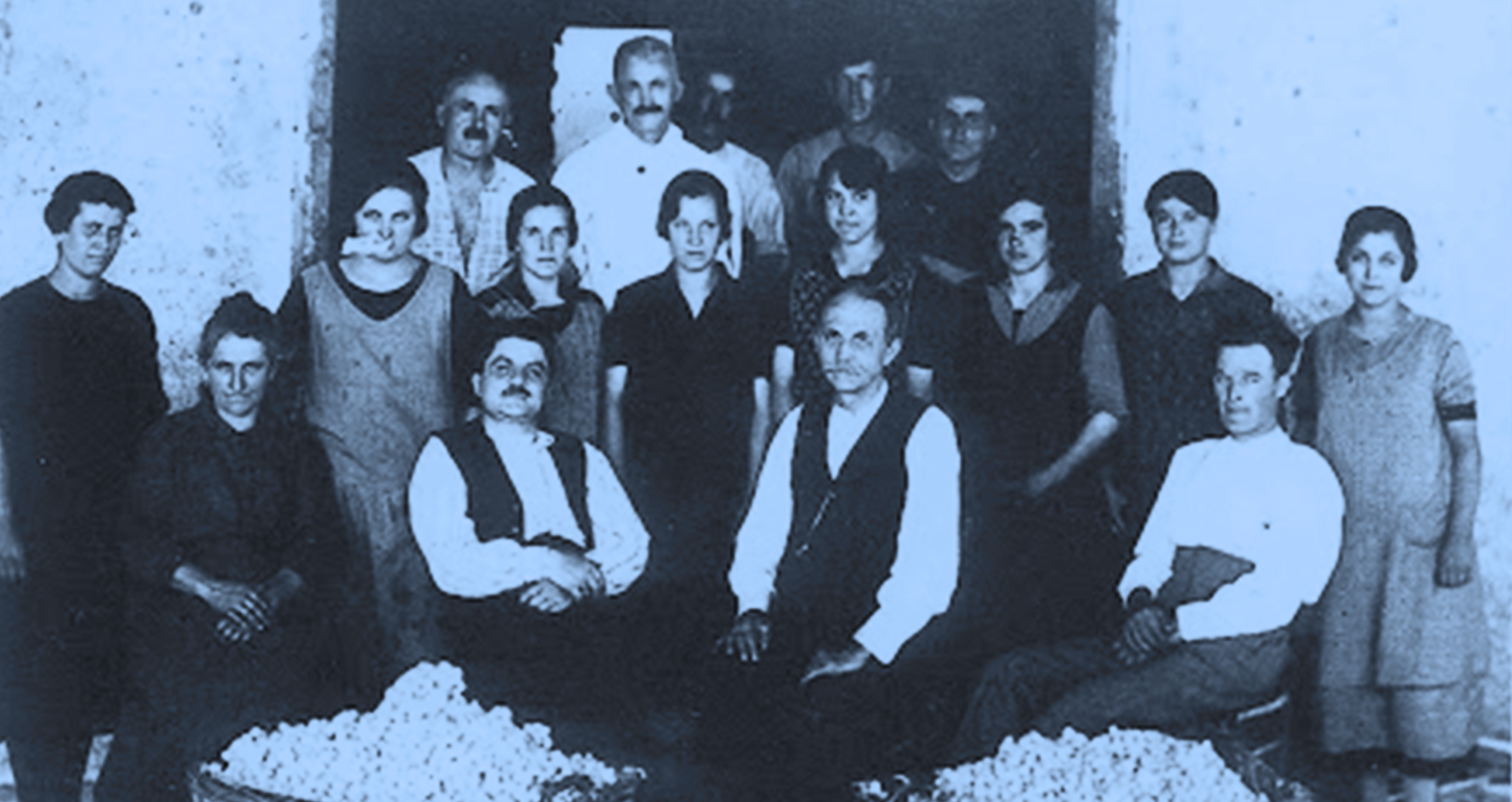The story so far
From the 19th century to today, from the improvement of the lives of the poorer classes to the desire to compete with the ever-changing modern market.
Cultures among valleys
The story of Cooperation in Trentino began in a time not so distant chronologically, but far from modern society. At the end of 1800s, our region was experiencing a difficult period of change: a generalized crisis in agriculture and industry, usury, mass emigration from valleys to the city.
It was Don Lorenzo Guetti, a priest native to the Giudicarie Esteriori, who conceived a way to collaborate, cope with hunger and the miserable conditions of families: cooperation, inspired by the solidarity and brotherhood values of the Gospel.
Alongside him stand the names of Silvio Lorenzoni of Brez, Baron Mersi, Father/Don (qui ho dei dubbi pure io) Giovan Battista Panizza and the engineer Emanuele Lanzerotti, founding fathers of cooperation along with the many priests close to the reality of the poorest..
In 1891 Pope Leone XII's encyclical "Rerum Novarum" gave the right impulse to the development of this new philosophy...
The Trentino's cooperation is not monolite, but is part of a much broader cooperative movement, born in England in 1844; in fact, in that year, in Rochdale, a small group of textile workers founded the first food cooperative, establishing specific principles later adopted by all subsequent cooperative systems.


A movement inspired by family
A MOVEMENT INSPIRED BY FAMILY
Founded by Don Guetti himself in 1890, the first cooperative was born in S. Croce di Bleggio with the name "Cooperative Family"-a name certainly not accidental. In fact, with the term Family they wanted to express the values of non-speculation, of a community that has greater relevance over the interests of the individuals, of concord and mutual help.
Two years later in Quadra, also in Bleggio Superiore area, the first Cassa Rurale (Rural Bank) was born with the aim of jointly confronting the serious and widespread phenomenon of usury and loan sharking. The model of these new credit cooperatives, based on economic and ethical motivations, was the one created by Friedrich Wilhelm Raiffeisen: in fact, the Rural Banks offered the opportunity to obtain a loan without onerous guarantees, which is why they were a driving force in the rural economy and contributed to the rebirth of local agriculture. and tear and loan sharking.

The Trentino Federation of Cooperation si born
The Trentino Federation of Cooperatives is born
At the turn of the 19th and 20th centuries, the cooperative movement had a real blast: consumer, credit and agricultural cooperatives were born. There were so many that, during the constitutive assembly on November 20, 1895, presided over by Don Lorenzo Guetti, the Federazione Trentina delle Cooperative was founded.
It was a real springboard that was followed by the formation of second-tier consortiums including the “Banco di S. Vigilio”,Cassa Centrale delle Casse Rurali (Central Fund of the Rural Banks), the the Industrial and Agricultural Union of Trento (Sindacato Agricolo Industriale Trento), the Central Warehouse of Cooperative Families, the Trentino Union of Electrical Companies and the “United Wineries Society”.

The obstacles of the Great World Wars
On the eve of World War I there were over five hundred cooperative associations affiliated with the Federation. However, the periods that followed were extremely difficult: World War I, Fascism resulting in state centralization and political control, the crisis of the 1930s, and World War II. Despite the disappearance of several cooperatives, the system slowly tried to recover.
In 1945 the unity of the Cooperazione Trentina was rebuilt and, thanks to the emergence of the Region and Province, which supported cooperation, the movement flourished again. At the beginning of the new Millennium, Legacoop Trentina, formed to protect labor and consumer rights and consisting of 40 cooperatives and 7,500 members, merged with Federazione.

Today, a national unicum
The specific historical development, special nature and deep-rooted political-institutional autonomy have permitted Cooperazione Trentina to achieve the unitarity of the movement, a uniqueness in the national panorama. This process has been possible only thanks to the synergy between companies and consortiums that have experienced in their economic, commercial and entrepreneurial relations the advantages of associational unity and simplification in representing and protecting the general interests of the movement.